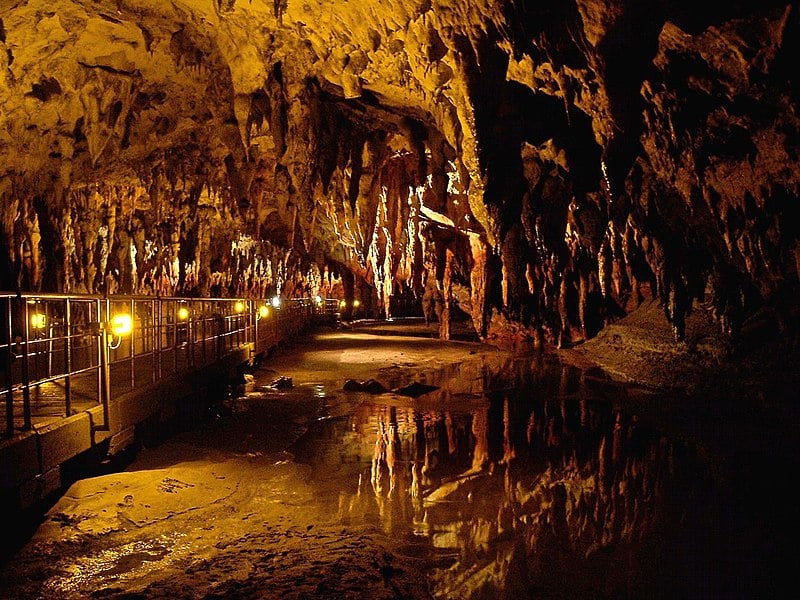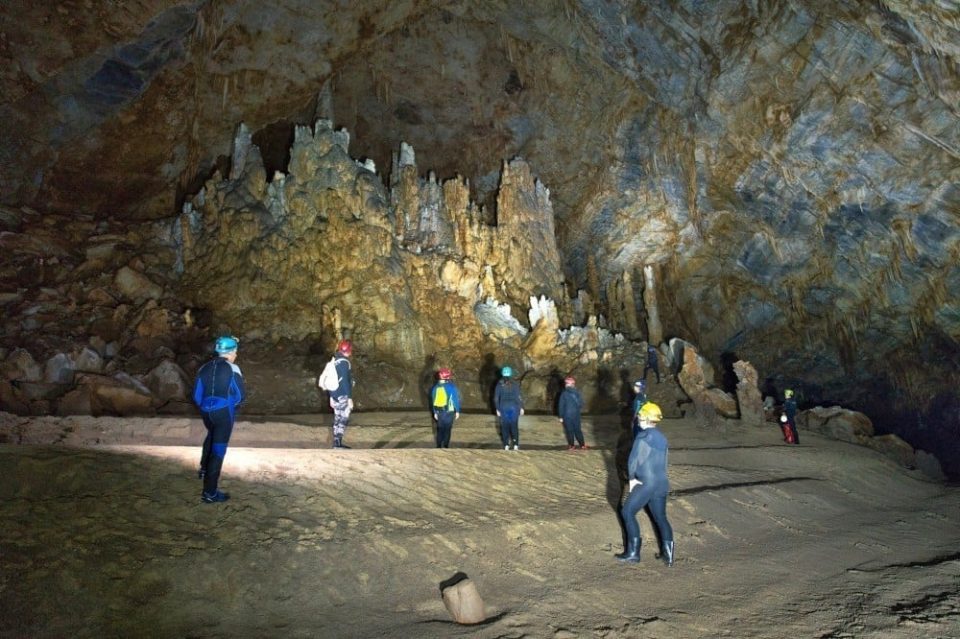
The Aggitis River cave, one of the largest and most spectacular river caves in all of Europe, located in northern Greece, is in danger of drying up, environmentalists warned.
In a recent visit to the cave, located near the city of Drama, members of the Hellenic Mountaineering Association (EOS) of Kavala found that the water level is particularly low, “the lowest in recent years”.
This reduction, EOS says, is due to the rising temperatures and reduced rainfall and snowfall, a sign of the reckless human interventions causing the climate crisis.

Kyriakos Papadopoulos, the manager of the cave, said the situation is sad. Speaking to the Athens-Macedonia News Agency he added:
“Without the water, the natural landscape of the cave and the surrounding area has changed. Visitors who have come to the cave in the past and remember water being the dominant element are surprised. Today they find that the water is minimal.”
He notes that rain alone is not enough to enrich the aquifer. There must be enough snowfall to fill the underground natural reservoirs again.
The cave, whose name originates from the river which runs through it, is an elongated, naturally-formed tunnel which serves as the single outlet for the waters collected in the enclosed basin of Kato Nevrokopi.
The riνer begins at the springs at Maara and crosses the western side of the lowlands after which the Philippi waters flow into it; the Aggitis then pours into the Strymon River and spans a length of 21 kilometers and a passage of 500m that ends at a siphon where visitors are able to experience the magic of this cave.

The first explorations of Aggitis River Cave
The first recorded exploration of the cave was made by Esprit-Marie Cousinéry, the French consul at Thessaloniki, who traveled and explored the region of Macedonia for 40 years at the end of the eighteenth century.
In the nineteenth century, a water wheel was installed in the enormous first hall which was used to pump the water up into a large pipe. The first short tunnel was built at this time for easier access to the first hall.
The cave’s water was clean enough to be used as drinking water for the town, as well as irrigation for the nearby tobacco fields. It wasn’t until 1978, however, that French and Greek speleologists managed to explore the cave down to a depth of 500 meters (1,640 feet).
An impressive natural structure
The roof of the cave is covered in stalactites, some of which have a diameter of 2 meters (6.5 feet) and reach down to the surface of the water. Their colors are varied and lovely with a special iridescence due to the existence of minerals, such as manganese, iron, and copper.
The area of the cave called the “Acropolis Hall” is especially impressive.
It is the largest single space ever discovered in a Greek cave, at 120m (394 feet) long, 65m (213 feet) wide, and 45m (148 feet) high. Its size, stalactite decorations, and the river flowing along it creating underground banks and rocky formations, make for a truly magical atmosphere.
